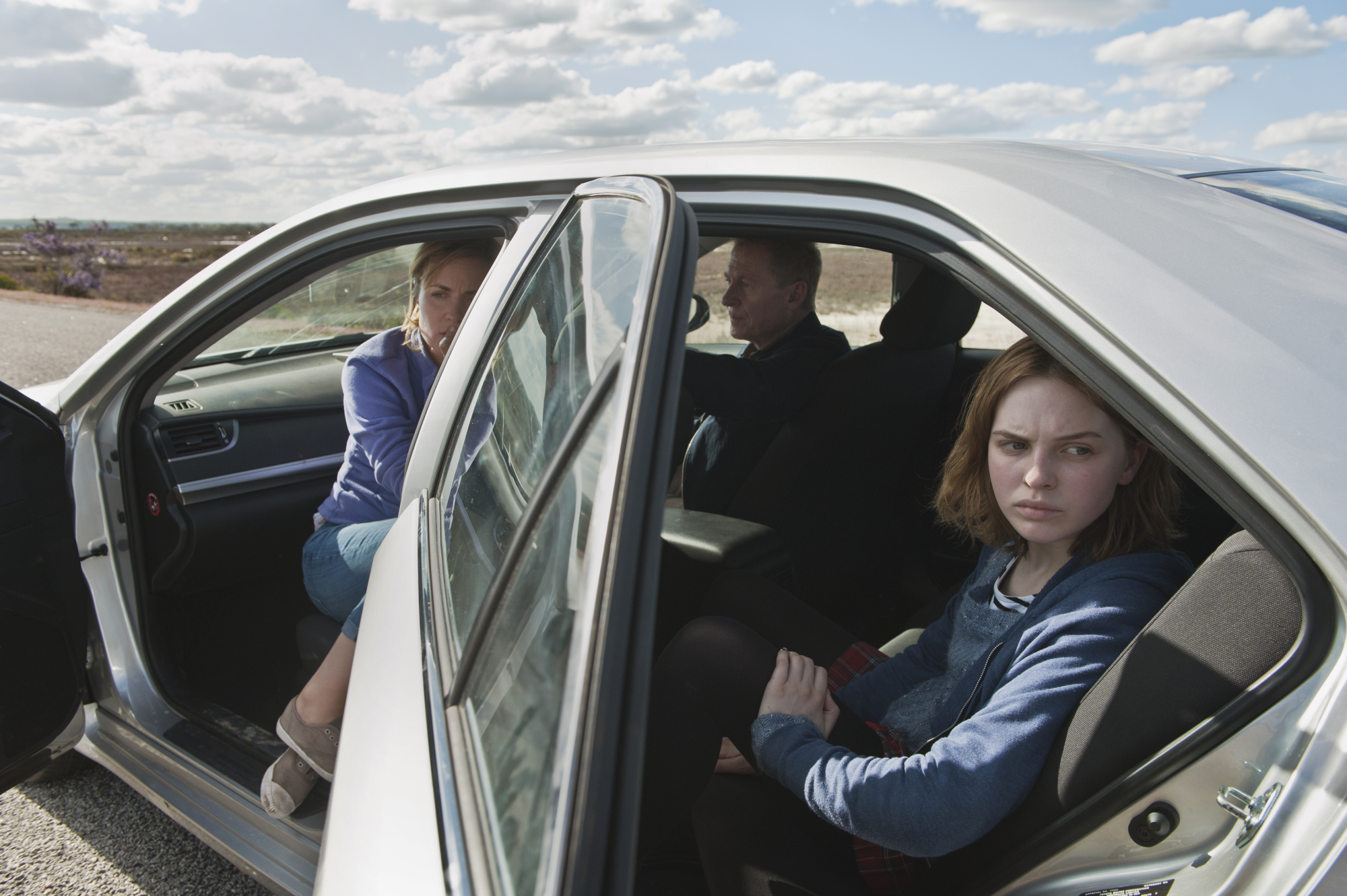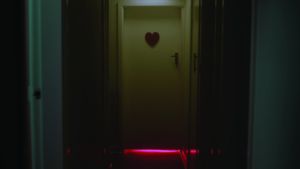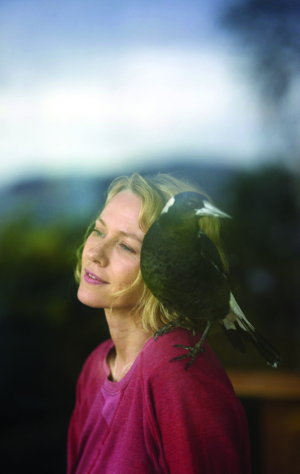It might seem odd to reflect that, when I first embarked on making documentaries, I learned more about that art from a writer and director of fiction than from anyone in the documentary business. Inverting the more typical relationship between narrative and documentary conventions, Sue Brooks’ fiction filmmaking seems, to me, to be largely informed by a documentary sensibility. This marks her work as special in the Australian screen industries (and as uniquely Australian, too, I will argue), with her most recent feature, Looking for Grace (2015), embodying a fascinating case study.

The late Dai Vaughan, a master of documentary editing, said that the difference between film and reality is that ‘film is about something, whereas reality is not’.[1]Dai Vaughan, cited in David MacDougall, Transcultural Cinema, Princeton University Press, Princeton, 1998, p. 41. This describes the nub of the dilemma inherent in storytelling. Essentially, we tell stories – filmic or otherwise – in an attempt to make sense of the world, while the world itself is not bound by any such imperative or logic. Another way of approaching this paradox is via the truism that ‘truth is stranger than fiction’, which is actually the reason I stick to making documentaries. For fiction writing is bound by the imagination of authors, and what they can convince us of, whereas reality has no such bounds. If something happens in the world, however unlikely or serendipitous, it cannot be denied. How often do we remark that some juxtaposition of actual events is so coincidental or extraordinary that no scriptwriter could dream it up – or, if they did, get away with it?
The thing about life – despite the onset of big data – is its unpredictability. Brooks understands the contradictory and gnarly nature of reality, and refuses to put it aside for the artificial cause of making smoothly engineered movies with perfect narrative arcs, three-act structures and (worst of all) neat resolutions. Indeed, as in her other work, Looking for Grace deliberately focuses on that gnarliness, celebrating it over and above whatever events happen to be occurring on the surface of the film.
It is not just that Brooks, alongside her filmmaking partner Alison Tilson,[2]In Brooks’ Japanese Story (2003) and Road to Nhill (1997), Tilson is credited as writer; however, Brooks both wrote and directed Looking for Grace, with Tilson as a producer. refuses to follow conventional expectations in her storytelling, but that her storytelling, like life, is contrary to expectation – in both senses of the word ‘contrary’ (‘opposing’ and ‘stubbornly defiant’). It is not just that things happen in her films when you don’t expect them to (a strategy that would simply employ the conventional dramatic element of surprise); instead, they happen when, measured against any model of storytelling, they shouldn’t. In Looking for Grace, our expectations of dramatic denouement are turned upside down, but the journey we go on is fascinating, of an entirely different tone than that seen in conventional movie-making, and primarily concerned with what happens in the spaces between events, and between people caught up in them.
Because of Brooks’ preoccupations with life and mortality, and her refusal to make films that escape either, her work sometimes sits uneasily in the commercial marketplace, precisely because it doesn’t conform to the mainstream view of what makes good drama.
Small moments in Looking for Grace are as important as big moments, and you never know which is coming next. Here, the disappearance of a teenage girl, Grace (Odessa Young), has an anticlimactic outcome in conventional dramatic terms – no mutilated, naked body is discovered in the bush, despite the fears of one and all – while it is the simple human need to pee that heralds the film’s coup de grâce. Furthermore, the characters are disarming. For example, unlike most movies, this one is populated by blokes who quite like the idea of commiting adultery but can’t actually bring themselves to do it. And, talking about juxtaposition, an image I still recall – perhaps because it is truly a documentary moment – is seen on a TV in a roadside cafe: a news report in which a clutch of baby ducks, wanting to get from one side of the road to the other, brings an entire rush-hour freeway to a halt.
A key aspect of Brooks’ films is that they are populated not by heroes and villains, but by ordinary people; in fact, her first experimental short, written by Tilson, was called An Ordinary Woman (1988). In 1992, Brooks mentored me throughout the production of my debut television documentary, Black Man’s Houses, released the following year. The first filmmaking tenet she emphasised was that, whether you agree with their opinions or not, people are mostly neither good nor bad, but doing their best with what they’ve got. Consequent to that was the second tenet: that, therefore, every participant deserves respect, to have their moment on the screen and not be stuck up there to have pot shots taken at them. Brooks is fastidious about living this ethic in her films. She also taught me that it is the seemingly insignificant (to the plot) moments that are often the important ones – because, while they may not advance the story, they illuminate both the characters and our common humanity.

While on the road searching for their daughter, for example, Looking for Grace’s Denise (Radha Mitchell) and Dan (Richard Roxburgh) ruminate on the pros and cons of being truthful to motel management about having eaten a Kit Kat from the minibar in their room. The private eye who is supposed to be assisting them, Norris (Terry Norris), wonders why the whitening agent in his toothpaste isn’t making any difference. And, when it comes to the decision to drive to Ceduna, where Grace’s friend Sappho (Kenya Pearson) has been sighted, a debate erupts about just exactly how far that is. These are the First World concerns of the everyday – akin to questions like whether the trains run on time or not – that make up a great part of our lives. Indeed, they are only revealed for what they truly are when juxtaposed with moments of potential disaster: as attempts to maintain control and make sense of an arbitrary world.
It is not so much that the scenes I have mentioned make this film a comedy, but that life itself is often comedic. When a death occurs, we are prone to ask, as do Brooks’ characters: Are you alright? You want a cup of tea? Want some brekkie? Want to pray or something? On such occasions, our inadequacies come to the fore, even though we mean well. Words are useless, but we feel the need to say something, to communicate. Denise reacts to such superficialities during the frantic search for her daughter, wondering, with irony, why it is that at times of crisis people always insist, ‘You should try and get some sleep.’
Brooks has said that she is ‘interested in the aloneness of life, as opposed to loneliness’, and maintains that we ‘never quite [get] the full picture of people’s lives’.[3]Sue Brooks, quoted in Philippa Hawker, ‘Looking for Grace: Sadness, Comedy and the Spaces Between’, The Sydney Morning Herald, 27 January 2016, <http://www.smh.com.au/entertainment/movies/looking-for-grace-sadness-comedy-and-the-spaces-between-20160127-gmeult.html>, accessed 26 February 2018. The competing narratives in Looking for Grace remain incomplete, as do the characters – but, more than that, there is an experimentation with structure going on. The film is made up of overlapping, vignette-like chapters that are told from the differing points of view of the characters, and which converge into the final section of the film. The chapters are of varying lengths and tonally different, shifting between the absurd, the apparently inconsequential and the dramatic. For Brooks, this is a deliberate reaction to conventional films that
all go in that one mold, and they’re all inclined to do the same sort of trajectory. So I was sort of fascinated about whether you could move a film around a bit like that, and whether you could get people to feel things at the same time, and be intrigued, and be amused.[4]Sue Brooks, quoted in Alex Heeney, ‘Australian Writer-director Sue Brooks Talks Looking for Grace’, Seventh Row, 26 September 2015, <https://seventh-row.com/2015/09/26/sue-brooks-looking-for-grace/>, accessed 26 February 2018.
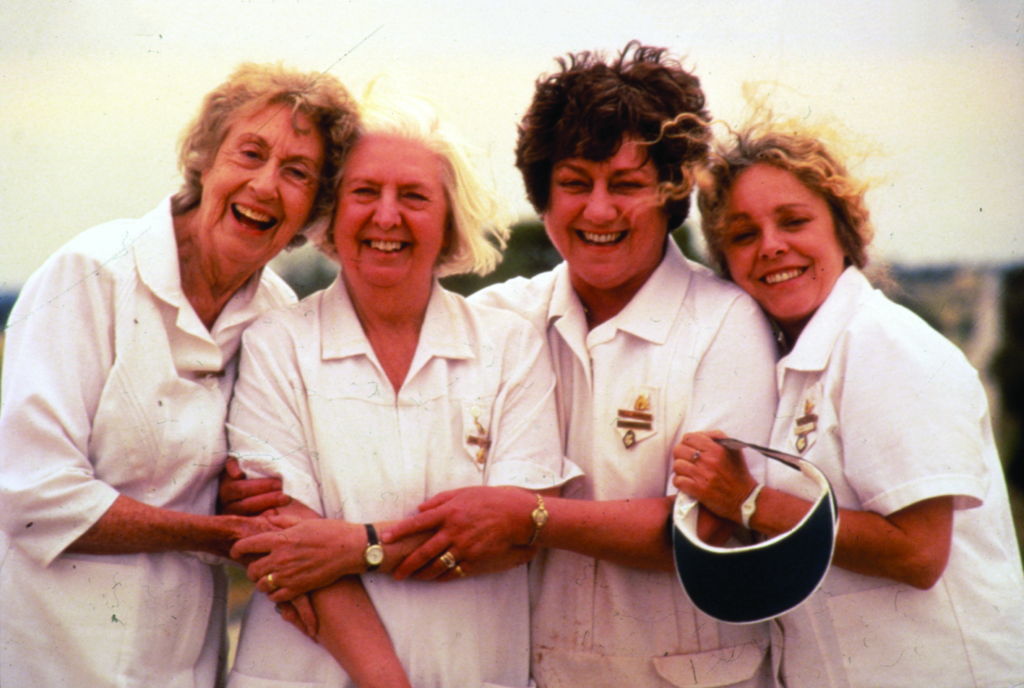
Such ‘moving around’ is, I feel, a closer approximation of real life and our experience of the world than that offered by the conventional (Hollywood) movie, and it is actually more akin to that presented to us by observational documentaries. But it is a risky strategy, and – as I notice with my own filmmaking, which, in a nutshell, defies the conventional imperative to be ‘innovative’ (I love talking heads) – some people get it and some don’t. Filmmakers who go against the grain don’t simply desire rave reviews; they hope that a reviewer somewhere will understand what they’re trying to do.
Going beyond these facets of Brooks’ work, however, there is a basic underlying theme that comes to the surface: that of mortality. Death occurs in her films (as it does in all of our lives), and not just when we expect it, or when it is deserved, or when the narrative needs a twist. Death comes when it is not needed, not warranted by the story, shouldn’t happen. This has become something of a leitmotif, most widely recognised in that counterintuitive, sledgehammer-blow moment in Japanese Story (2003) on which I cannot elaborate in case readers haven’t seen it. Death is that ultimately contrary thing in her films, as it is in reality; looking back, I realise this existential concern was flagged in her first feature, Road to Nhill (1997) – penned, like Japanese Story, by Tilson – in which Phillip Adams, as the voice of God, intones:
So wherever you are, whoever you are, whatever you remember, whatever you forget, just remember to remember this: you never know what, you never know where, you never know when. Therefore, go in peace, live harmoniously and do not deny the undeniable end, the certain unavoidable, inescapable, inevitable, irrevocable conclusion to your very own story and to every life, each and every one.
This considered, the title of Looking for Grace is, of course, no coincidence. In theological terms, ‘grace’ refers to undeserved divine assistance. The ambiguity of the film’s title resonates with that warning issued in Road to Nhill: we all wish for one another that, when the time comes, fate (or God) will be kind and our going will be easy. There is a sense whereby Brooks’ characters live in a state of grace. They are treated with such personal reverence by their creator that we can’t help but warm to each of them.
Because of Brooks’ preoccupations with life and mortality, and her refusal to make films that escape either, her work sometimes sits uneasily in the commercial marketplace, precisely because it doesn’t conform to the mainstream view of what makes good drama. But this makes her (and Tilson’s) filmic contributions even more valuable and, if I might say so, more Australian. Brooks grew up in the country Victorian town of Pyramid Hill, among people one might describe as salt-of-the-earth, ordinary types who, as she told me once, would rather tell you how to fix your lawnmower with a bit of tape and string than do their job and sell you a new one. The laid-back, understated, laconically repressed characters that helped form her personality are the very ones she honours in her creative work. But deep within that rich seam of humanity tick away neuroses that we all recognise. They surface in anxieties about our own and others’ behaviour, and are existential in theme.
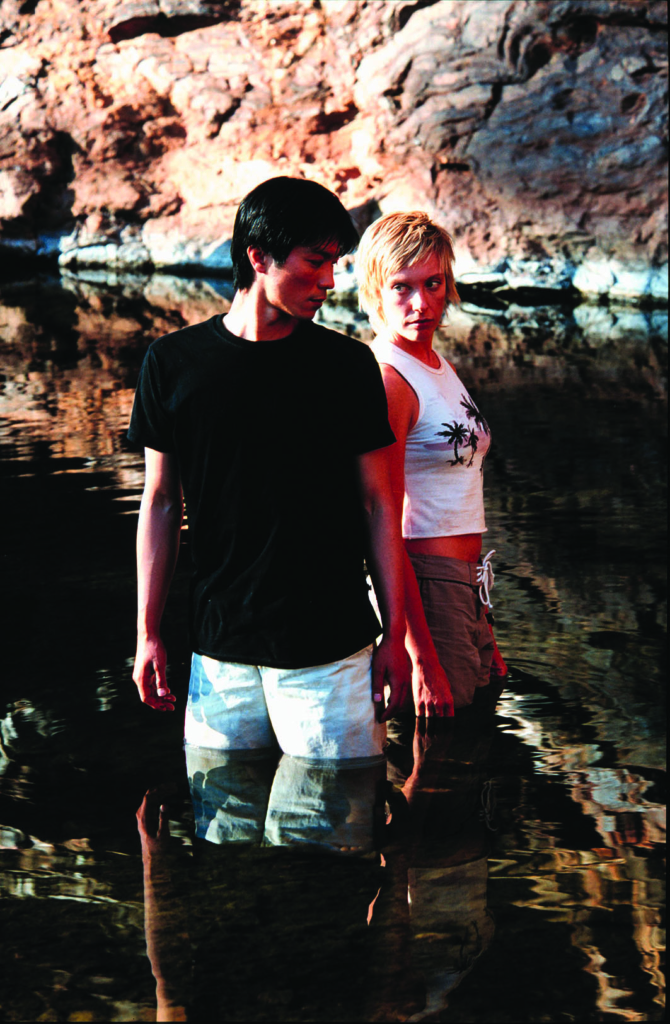
Brooks wants us to meditate about all of these things in the darkened space of the cinema, with ample opportunity for reflection and pause, rather than hitting us with a barrage of half-second cuts and an overpowering soundtrack (a problem that occurs as much with documentaries these days as with dramas). The final shot in Looking for Grace is a point-of-view image through the windscreen of the family car as it cruises through the outback. The arrow-straight road disappears into infinity ahead, and this shot runs, uninterrupted, for exactly sixty seconds. It is a relative eternity in modern screen terms – an eternity in which nothing happens. Yet I came out of the cinema wishing I had the courage or nous to end one of my docos with a shot like that: room to think.
For me, then, while she works in fiction and with actors, Brooks is a documentary maker at heart. She has referred to the ‘observational quality’ of her work,[5]ibid. and documentary making is less about what happens than how people are represented. The foremost responsibility of the documentary maker is to facilitate the audience’s encounter with the subject/s of their film. In Brooks’ work, we see a world we recognise and identify with, full of complicated, flawed people that pull at our heartstrings and make us smile or cry, despite their often apparent foolishness.
Endnotes
| 1 | Dai Vaughan, cited in David MacDougall, Transcultural Cinema, Princeton University Press, Princeton, 1998, p. 41. |
|---|---|
| 2 | In Brooks’ Japanese Story (2003) and Road to Nhill (1997), Tilson is credited as writer; however, Brooks both wrote and directed Looking for Grace, with Tilson as a producer. |
| 3 | Sue Brooks, quoted in Philippa Hawker, ‘Looking for Grace: Sadness, Comedy and the Spaces Between’, The Sydney Morning Herald, 27 January 2016, <http://www.smh.com.au/entertainment/movies/looking-for-grace-sadness-comedy-and-the-spaces-between-20160127-gmeult.html>, accessed 26 February 2018. |
| 4 | Sue Brooks, quoted in Alex Heeney, ‘Australian Writer-director Sue Brooks Talks Looking for Grace’, Seventh Row, 26 September 2015, <https://seventh-row.com/2015/09/26/sue-brooks-looking-for-grace/>, accessed 26 February 2018. |
| 5 | ibid. |
